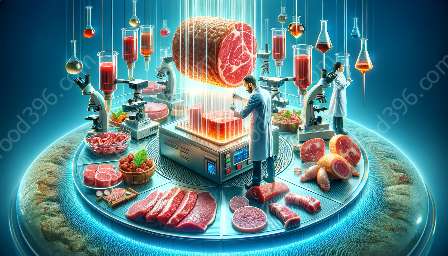Have you ever wondered what makes a steak or a burger taste so good? It's not just the cooking method or the seasoning; it's also about the quality of the meat itself. In the world of meat science, evaluating meat quality and analyzing its sensory attributes are crucial aspects that have a significant impact on the consumer experience. Let's delve into the fascinating topic of meat quality evaluation, sensory analysis, and meat science.
The Basics of Meat Quality Evaluation
When it comes to evaluating the quality of meat, several factors come into play. These include the appearance, texture, flavor, and overall sensory experience of the meat. Meat quality evaluation involves assessing both the intrinsic and extrinsic qualities of the meat, such as its marbling, color, and tenderness. These characteristics are vital in determining the overall quality and desirability of the meat product.
Meat Sensory Analysis
Sensory analysis is a key component of meat quality evaluation. This scientific method involves using human senses to evaluate and understand the sensory properties of meat, such as its taste, aroma, texture, and appearance. Through sensory analysis, meat scientists can uncover the complex interactions between the physical, chemical, and biological aspects of meat that contribute to the overall sensory experience.
The Role of Meat Science
Meat science is a multidisciplinary field that encompasses various aspects of meat production, processing, and quality assessment. It integrates knowledge from animal science, food technology, and consumer behavior to study the composition, properties, and behavior of meat. Meat scientists utilize advanced techniques and technologies to explore the intricate details of meat quality and sensory attributes, ultimately enhancing the overall understanding and improvement of meat products.
Fundamental Concepts in Meat Quality Evaluation
Understanding the fundamental concepts of meat quality evaluation is essential for ensuring the production of high-quality meat products. From the moment an animal is processed to the final product reaching the consumer's plate, several critical stages impact the overall meat quality. These stages include pre-slaughter handling, postmortem changes, chilling, aging, and processing methods. Each stage plays a crucial role in shaping the sensory attributes and overall quality of the meat.
Advanced Techniques in Meat Quality Evaluation
With advancements in technology, the field of meat science has witnessed the development of advanced techniques for meat quality evaluation. These include instrumental methods such as texture analysis, spectroscopy, and electronic nose technology, which provide objective and precise measurements of various meat attributes. These techniques complement traditional sensory analysis methods and offer valuable insights into the intricate characteristics of meat that are not easily perceptible through human senses alone.
Consumer Perception and Meat Quality
The link between consumer perception and meat quality is a crucial aspect that cannot be overlooked. Consumers' preferences for meat products are heavily influenced by sensory attributes such as tenderness, juiciness, flavor, and overall visual appeal. By understanding and aligning with consumer preferences, meat producers and retailers can optimize their products to meet and exceed consumer expectations, ultimately enhancing market competitiveness and customer satisfaction.
Quality Control and Assurance
Quality control and assurance play a pivotal role in ensuring consistent meat quality across different batches and production processes. By implementing stringent quality control measures and monitoring key quality indicators, such as pH levels, color stability, and lipid oxidation, meat producers can uphold the quality and safety of their products. This not only instills confidence in consumers but also fosters a positive reputation for the brand.
The Future of Meat Quality Evaluation and Sensory Analysis
As the global demand for high-quality meat products continues to rise, the future of meat quality evaluation and sensory analysis holds immense potential for innovation and advancements. With ongoing research in areas such as genetic selection, sustainable production methods, and novel sensory analysis technologies, the industry is poised to witness transformative changes that will shape the future of meat science and consumer experiences.
Emerging Trends in Meat Science
Embracing emerging trends in the meat science industry, such as personalized nutrition, clean label products, and alternative protein sources, presents new opportunities for transforming the landscape of meat quality evaluation and sensory analysis. As consumer preferences evolve, so too must the methods and strategies employed in assessing and enhancing meat quality, ensuring that the industry remains resilient, adaptable, and responsive to the changing market dynamics.
Conclusion
Meat quality evaluation and sensory analysis are integral components of meat science that drive the continuous improvement and innovation of meat products. By understanding the complex interplay of sensory attributes, consumer preferences, and scientific principles, meat producers and researchers can elevate the quality, appeal, and satisfaction derived from meat consumption. As the industry navigates through evolving consumer demands and technological advancements, the pursuit of excellence in meat quality and sensory analysis remains at the forefront of shaping the future of the meat industry.

